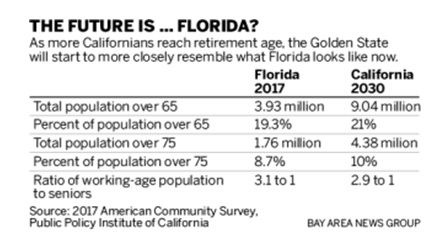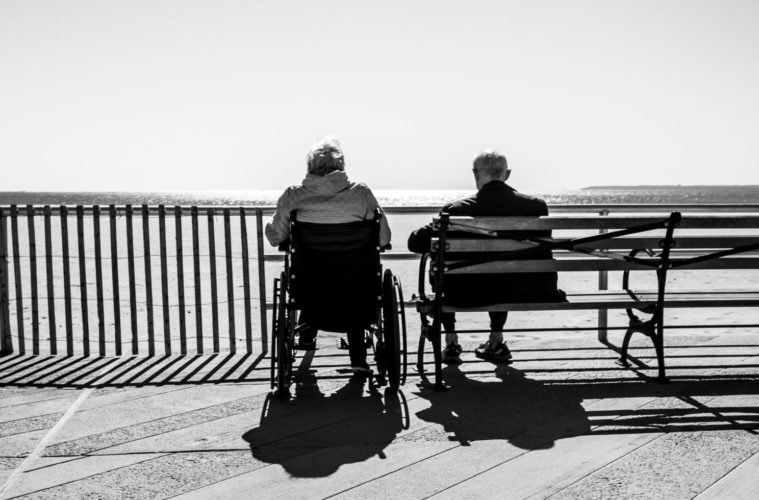Although the Americans with Disability Act (ADA, 1990) has been implemented for 30 years, few businesses do more than provide minimum requirements for accessibility and, then, only make changes brought to their attention by disabled individuals advocating for their rights. This is better than it was before the ADA, but, in 2020, does it make sense that those who live life differently from most cannot just go out in society and experience events, appointments and social life the same way everyone else does?
These life-style challenges often lead to isolation that is no different from the sense of isolation many people feel today as a result of the current Covid-19 pandemic. It’s incredibly important to realize that disabled individuals have dreams, abilities, wants and needs just as able-bodied individuals do. Many want to be a part of what L.A. has to offer, including reasonable workforce participation and social activities. Disabled individuals tell us that the problem is not their disability, but that the community isn’t designed to include them, and it never was! This is why the ADA is so important, but also, why we must elevate inclusivity to a kind of moral imperative in L.A., one of the most diverse cities in our nation.
The ADA is a work in progress, like most legislation, and invites all aging and disabled individuals under its protection. We are entering what researchers have called the intersection of aging and disability. Consider the fact that we have longer life expectancy, today, than ever before. This means an increasing number of older adults aged 55 and aging into some type of disability. Even normal aging may lead to mental and physical decrements like vision loss, hearing impairment, greater need for caregiver assistance, loss of mobility, increased wheelchair/walker/cane use, more speech therapy needs, mild cognitive impairments that may progress to dementia. All of these life changing events are disabilities. But for most, quality of life is still achievable. Or is it?
 If L.A. is difficult to negotiate for currently disabled individuals, is our community ready to accommodate the largest number of older adults in our history? Many of these persons will need steadily-increasing levels of care and disability services. It is estimated that by 2030 there will be more than 9 million older adults living in California and about 2 million of them will reside in L.A. Currently, 22 percent of the U.S. population are living with disabilities and many Californians now turning 65 can expect to spend about 20 percent of their remaining years with a major disability (Pitkin-Myers 2012 Los Angeles Generational Projections).
If L.A. is difficult to negotiate for currently disabled individuals, is our community ready to accommodate the largest number of older adults in our history? Many of these persons will need steadily-increasing levels of care and disability services. It is estimated that by 2030 there will be more than 9 million older adults living in California and about 2 million of them will reside in L.A. Currently, 22 percent of the U.S. population are living with disabilities and many Californians now turning 65 can expect to spend about 20 percent of their remaining years with a major disability (Pitkin-Myers 2012 Los Angeles Generational Projections).
Researchers often define disability as having a condition that interferes with two or more basic activities of daily living (ADLs) such as:
- Walking: Getting around the home or outside. The technical term for this is “ambulating.”
- Feeding: Being able to get food from a plate into one’s.
- Dressing and grooming: Selecting clothes, putting them on, and managing one’s personal appearance (BetterHealthWhileAging.net).
Finally, if you, a loved one, or someone in your social network is chronically disabled due to developmental, accident-caused or age-related changes you might check out the National Council on Independent Living (NCIL) website (https://ncil.org/). This non-profit works for and is operated by disabled individuals who promote independence and quality of life through education, referrals and many adaptive resources.
If you have the time, we would like to hear from you to know how you feel about L.A. as an inclusive environment or how L.A. can be even more inclusive.
George Shannon, MSG, PhD, Director: Rongxiang Xu Regenerative Life Sciences Lab (RxX); Erin Crutcher, MSG Candidate; Mengzhao Yan, MA; Research Assistants, RxX Lab; USC Leonard Davis School of Gerontology
Advertising disclosure: We may receive compensation for some of the links in our stories. Thank you for supporting LA Weekly and our advertisers.

